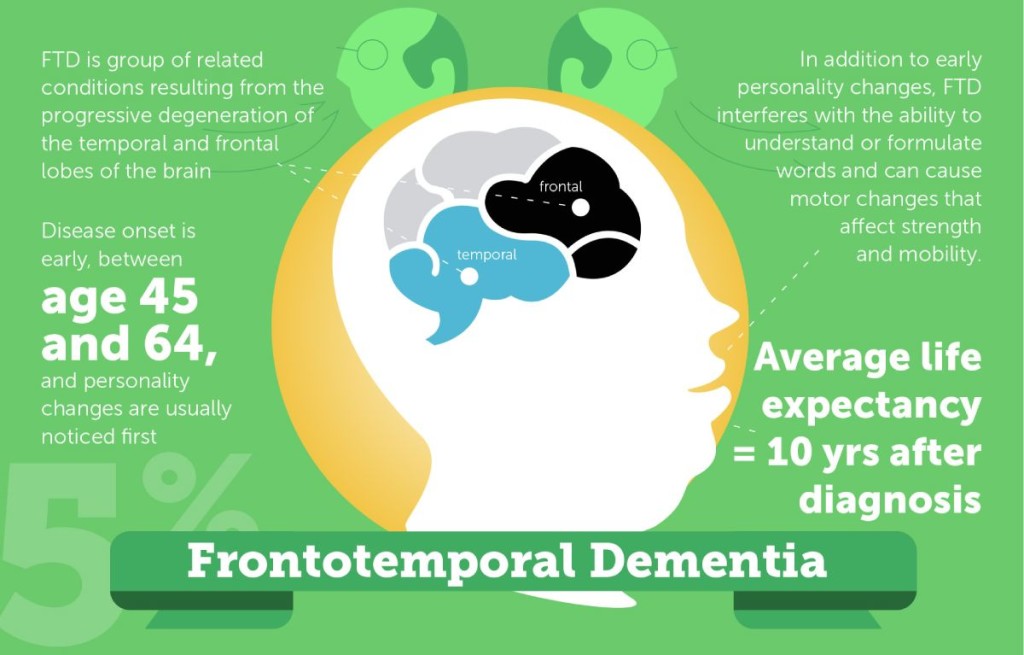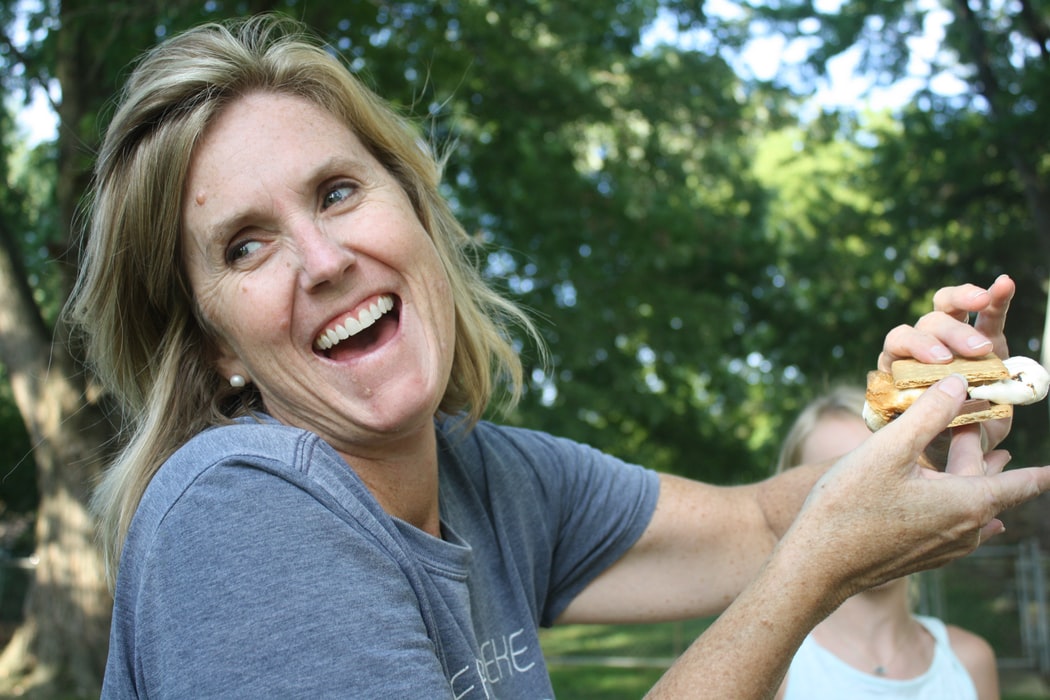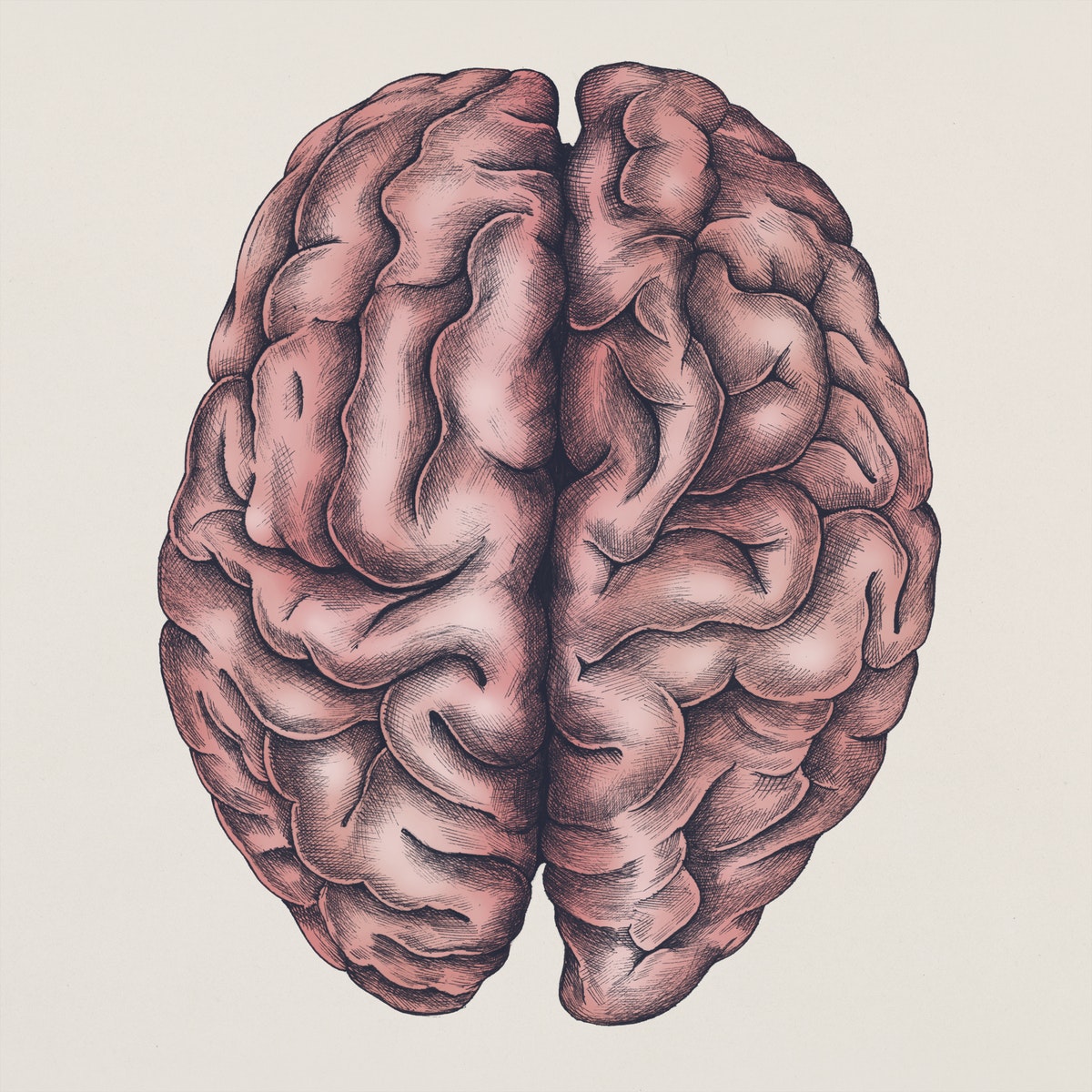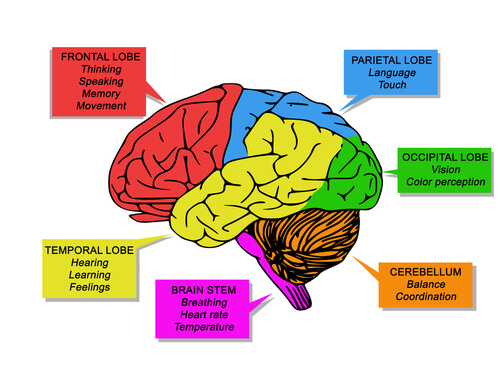What Is The Life Expectancy Of Frontal Lobe Dementia

Early survival analyses showed median survival from diagnosis of FTLD to be 713 years in clinic cohorts 1 2 3 4 5 6 and 68 years in neuropathology series 7 8.
What is the life expectancy of frontal lobe dementia. However too few realize today that dementia can impact younger adults. Even so when it comes to how long can a person live with frontotemporal dementia it is typically between 6 and 8 years once the symptoms start. Frontotemporal Dementia Life Expectancy.
The average lifespan of a person newly diagnosed with Lewy body dementia is between five to seven years. Life expectancy or survival is a particularly pertinent milestone for practice and research hence the interest in its measurement and correlates. FTD is not life-threatening people may live with it for years.
But this is highly variable and some people live much longer than this. However someone fit and healthy on diagnosis could live considerably longer. Pneumonia is the most common cause of death with FTD.
The average survival time after symptoms start is around 8 to 10 years. The life expectancy for an individual with Alzheimers is usually between 8-12 years from diagnosis. About 70 percent of cases begin before age 65 so it is a more common dementia among the young old FTD involves degeneration of the frontal and temporal lobes of the brain.
What started out as a slow progression for the first few years really became more rapid towards the end. Understanding is growing that not all dementia is Alzheimers. If you or a loved one has been diagnosed with dementia remember youre not alone.
Likewise what do people with frontal lobe dementia die from. The frontal lobe dementia life expectancy can be as long as seventeen years but some patients only live two years as they soon succumb to complications of the disease. In one American study people lived from between one and twenty-six years after first spotting symptoms so the variation is enormous.

Life expectancy or survival is a particularly pertinent milestone for practice and research hence the interest in its measurement and correlates.
What is the life expectancy of frontal lobe dementia. In general changes in the frontal lobe are associated with behavioral symptoms while changes in the temporal lobe lead to language and emotional disorders. A Word From Verywell. The life expectancy for an individual with Alzheimers is usually between 8-12 years from diagnosis.
The frontal lobe dementia life expectancy can be as long as seventeen years but some patients only live two years as they soon succumb to complications of the disease. In one American study people lived from between one and twenty-six years after first spotting symptoms so the variation is enormous. People with Alzheimers disease live an average of four to eight years after.
The average survival time after symptoms start is around 8 to 10 years. But this is highly variable and some people live much longer than this. Frontal lobe dementia is distinguished from other types of dementia by the presence of abnormalities in the nerve cells of the brain known as Pick bodies.
Symptoms of frontotemporal disorders vary from person to person and from one stage of the disease to the next as different parts of the frontal and temporal lobes are affected. What are the complications of frontotemporal dementia. What started out as a slow progression for the first few years really became more rapid towards the end.
The frontal lobes are important regulators of behavior and the temporal lobes assist in our understanding and expression of language. However too few realize today that dementia can impact younger adults. However there are those who have lived up to 20 years according to the not-for-profit Lewy Body Dementia Association.
About 70 percent of cases begin before age 65 so it is a more common dementia among the young old FTD involves degeneration of the frontal and temporal lobes of the brain. This disease is different for everyone who has it. If you or a loved one has been diagnosed with dementia remember youre not alone.

The frontal lobe dementia life expectancy can be as long as seventeen years but some patients only live two years as they soon succumb to complications of the disease.
What is the life expectancy of frontal lobe dementia. If you or a loved one has been diagnosed with dementia remember youre not alone. The life expectancy for an individual with Alzheimers is usually between 8-12 years from diagnosis. Even so when it comes to how long can a person live with frontotemporal dementia it is typically between 6 and 8 years once the symptoms start.
The average survival time after a diagnosis of frontal lobe dementia is six to eight years although patients have been recorded to live up to 20 years after a frontal lobe dementia diagnosis. The average survival time after symptoms start is around 8 to 10 years. Frontotemporal Dementia Life Expectancy.
FTD is not life-threatening people may live with it for years. FTD also known as frontotemporal dementia frontotemporal degeneration or Picks disease is the most common dementia diagnosed before age 60. However too few realize today that dementia can impact younger adults.
Pneumonia is the most common cause of death in those who have frontotemporal dementia. The average lifespan of a person newly diagnosed with Lewy body dementia is between five to seven years. Life expectancy among patients with brain atrophy can be influenced by the condition that caused the brain shrinkage.
In general changes in the frontal lobe are associated with behavioral symptoms while changes in the temporal lobe lead to language and emotional disorders. Pneumonia is the most common cause of death with FTD. However there are those who have lived up to 20 years according to the not-for-profit Lewy Body Dementia Association.
Frontal lobe dementia is distinguished from other types of dementia by the presence of abnormalities in the nerve cells of the brain known as Pick bodies. People with Alzheimers disease live an average of four to eight years after. What started out as a slow progression for the first few years really became more rapid towards the end.








